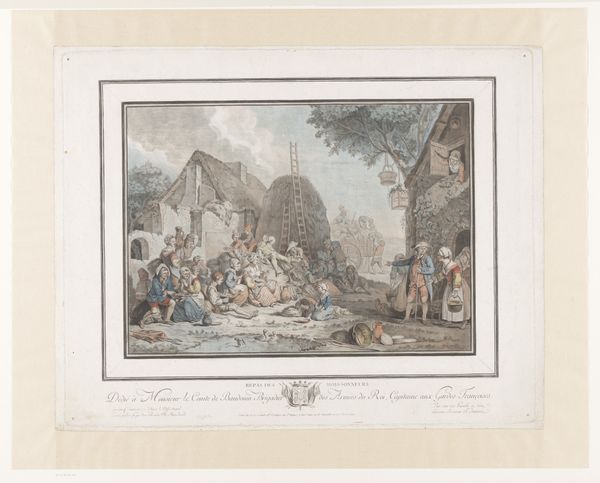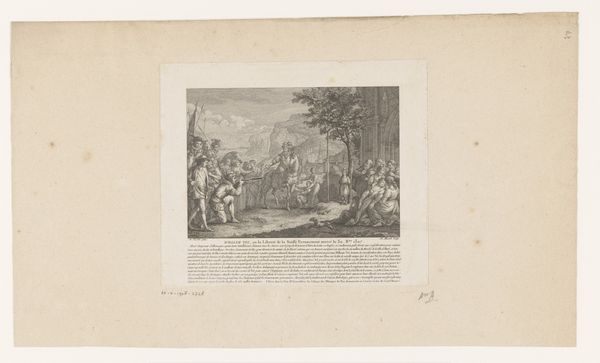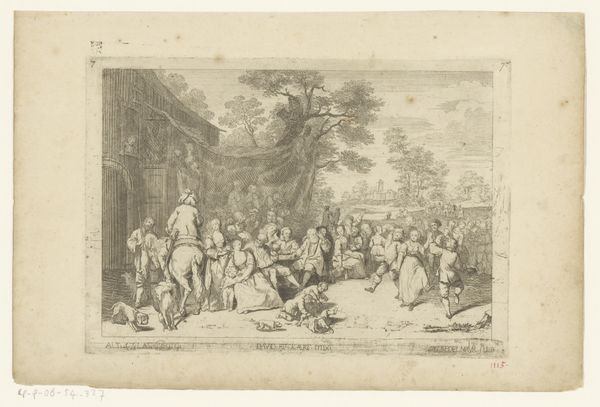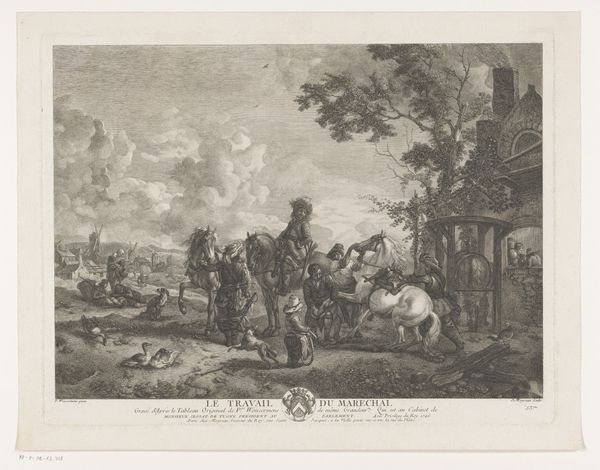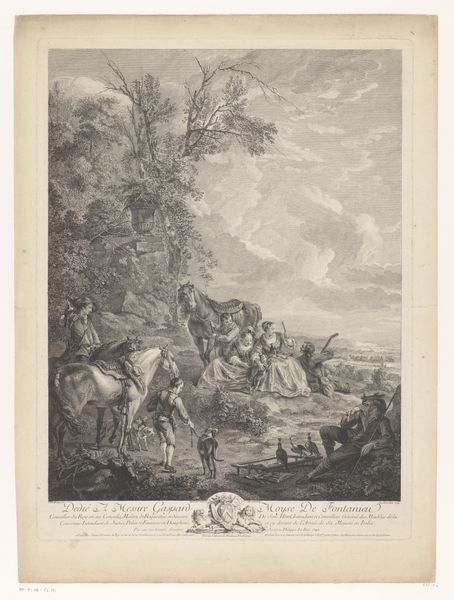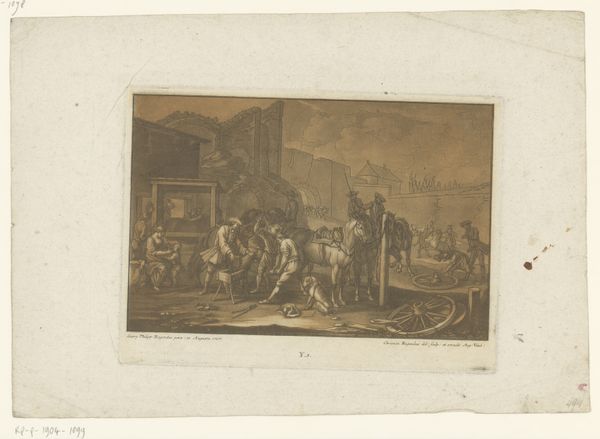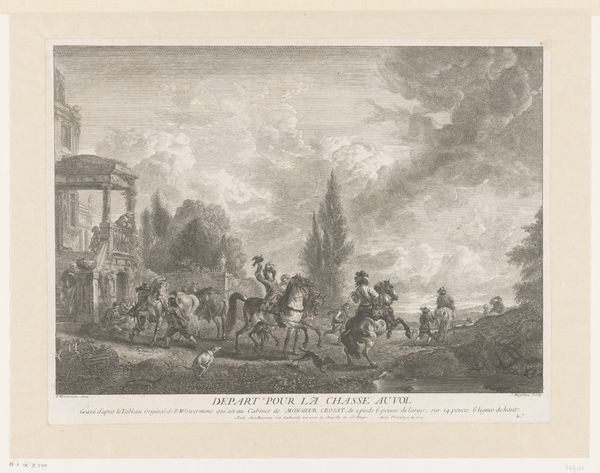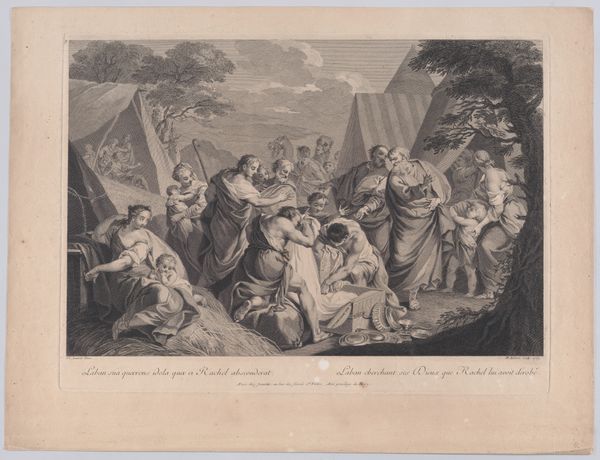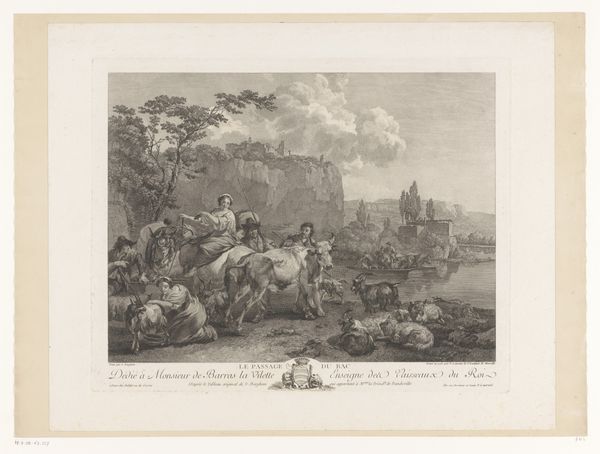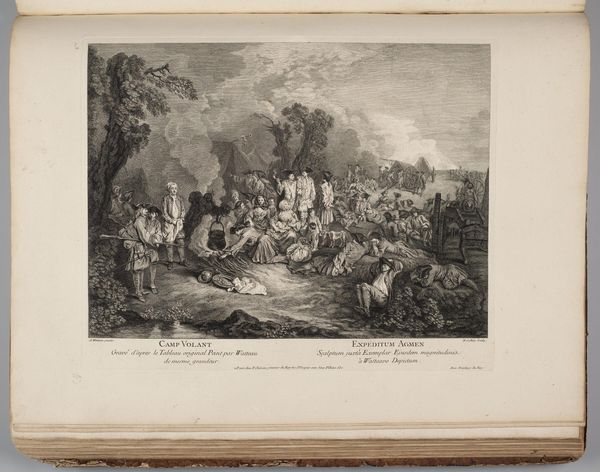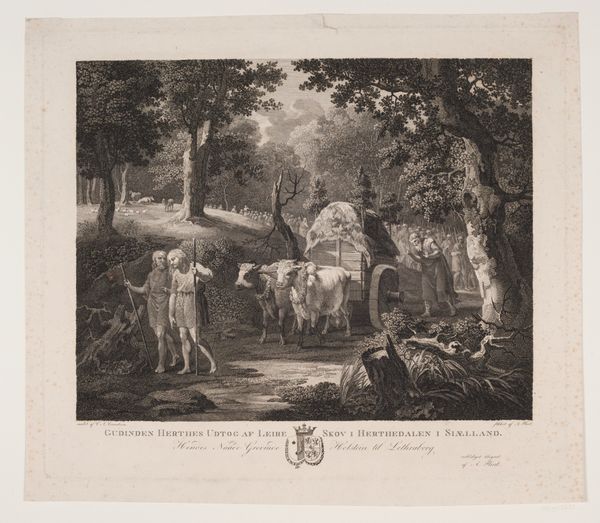
Dimensions: height 458 mm, width 577 mm
Copyright: Rijks Museum: Open Domain
Curator: This watercolor print, “Dorpsfeest met dansende en etende figuren,” or "Village Feast with Dancing and Eating Figures," by Jean François Janinet, dates back to around 1775. Editor: It has a frenetic energy, doesn’t it? A kind of orchestrated chaos. The composition is incredibly dynamic, pulling your eye every which way. Curator: Note the interplay of lines. Janinet masterfully employs delicate watercolor washes to create form, especially in the swirling figures that dominate the center, as well as etching to define contours and suggest depth, lending it this liveliness. Editor: Yes, and I’m immediately drawn to who is included – and who is not – in this festive moment. Is this an idealized image, or a reflection of a real social dynamic in rural communities? Were such revelries accessible to everyone, regardless of class or gender? What about disability? We see the people who are partying, but whose labor creates this free time for them? Curator: Those are pertinent questions, certainly, but consider, too, how the artist renders the atmospheric perspective, particularly the subdued tones in the background structures that recede into the distance, setting a clear, organized hierarchy. Editor: But by setting that hierarchy and focusing on one celebratory moment, Janinet perhaps offers us a lens through which to examine labor, power dynamics, and representation within the rural communities of the time. Who is memorialized and why? Who can revel? Whose voices or likenesses remain in the margins or absent? It's critical to think about this picture in the broader cultural landscape of the 18th century. Curator: Absolutely. And let's not overlook the artist's deliberate structuring of the print itself. By creating these planes of reality and careful lines, the composition itself invites us into layers of seeing. Editor: It’s remarkable how a single artwork can offer so much depth and inspire multiple lenses. Curator: Indeed. Hopefully this exploration gives listeners just some small ways to appreciate what’s here in front of them, to understand its power, and the way such village feasts live on as important iconography today.
Comments
No comments
Be the first to comment and join the conversation on the ultimate creative platform.
